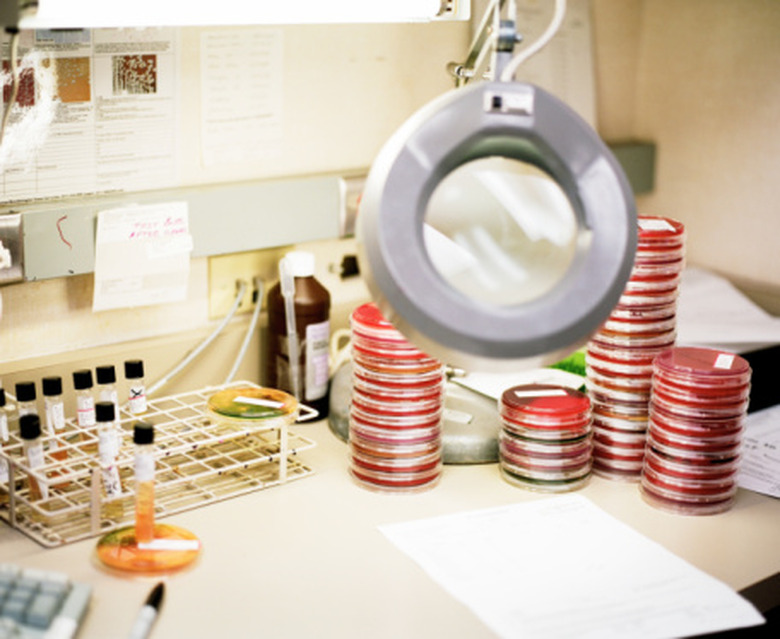Science Projects That Are Already Done & Can Be Copied
Science projects require a purpose and procedure. In addition, science projects require variables and a control in order to compare results. There are many science projects that are repeated in classrooms with known results in order to illustrate the scientific method to students. Copying these experiments will give a student hands-on experience conducting a scientific procedure.
pH experiment
pH experiment
Learn how to use pH paper and test different household items to determine if they are acidic or basic. This experiment is simple and requires minimal materials. Using litmus paper (type of pH paper) and placing it in the different solutions, an indicator color will appear at the pH level of the substance. A high pH results in a strong base and low pH results in a strong acid. A pH of seven is neutral. Create a table on paper or in your computer with columns for the solutions tested, pH result, and acidic or basic. Choose at least ten different household solutions, such as laundry detergent, dish detergent, shampoo, juice, milk or cleaning supplies. Record all of your results.
Effectiveness of Sugar on Flowers
Effectiveness of Sugar on Flowers
Conduct an experiment to determine the effects of sugar on preserving flowers. Choose the type of flower you would like to use, such as a carnation, rose or violet. Make sure you get at least four plants. Mix different concentrations of water mixed with sugar, ranging from a low concentration of sugar to a high concentration of sugar. For instance, one teaspoon to three teaspoons. Observe the plant's flowers on a daily basis and look for signs of wilting. Record results. In addition, take photographs, which will be a great addition to your project.
Effects of Salinity on Brine Shrimp
Effects of Salinity on Brine Shrimp
Environmental influences can effect animal survival. A science project that can illustrate this theory is to alter the salinity in the environment of brine shrimp. Salinity is the amount of salt in the water. Obtain a batch of brine shrimp and follow the directions for hatching the shrimp. You can purchase a container of sea monkeys, which are brine shrimp and are available online at sea-monkey.com. Fill four petri dishes with varying levels of salinity. Add different amounts of table salt to each water solution (one to three teaspoons). Leave one petri dish with water only (to act as your control). Add at least five brine shrimp to each petri dish using a dropper. Monitor your results every twelve hours for three days to see how many brine shrimp survive. Record your results.
Temperature Effects on Bacteria Growth
Temperature Effects on Bacteria Growth
Determine the effect of temperature on the growth of bacteria. The experiment can be conducted using a strain of bacteria obtained from your science laboratory, such as E. Coli or Streptococcus. The materials needed are at least four agar plates, a Bunsen burner and an inoculating needle. Place the inoculating needle over the flame of the Bunsen burner to destroy any existing bacteria. Dip the needle into the vial of bacteria and transfer to the agar. Close the petri dish. Label the petri dish with the type of bacteria and the temperature you are placing it in. Choose varying levels of temperatures. Place one plate into a freezer, one in a refrigerator and one in an incubator oven. The last petri dish should be left out in room temperature. Monitor the plates for one week. Record results.
Cite This Article
MLA
Schafer, Dana. "Science Projects That Are Already Done & Can Be Copied" sciencing.com, https://www.sciencing.com/science-already-done-can-copied-8087825/. 24 April 2017.
APA
Schafer, Dana. (2017, April 24). Science Projects That Are Already Done & Can Be Copied. sciencing.com. Retrieved from https://www.sciencing.com/science-already-done-can-copied-8087825/
Chicago
Schafer, Dana. Science Projects That Are Already Done & Can Be Copied last modified August 30, 2022. https://www.sciencing.com/science-already-done-can-copied-8087825/
